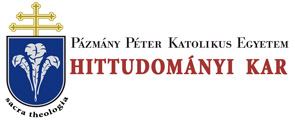Folia Theologica et Canonica 9. 31/23 (2020)
Sacra theologia
POPE BENEDICT XV’S NEGOTIATIONS.. 61 to get a whole picture, we must deal with the reasons of difficult neutrality; papal speeches and humanitarian actions; and the interest of the Holy See in the survival of the Austro-Hungarian Empire. I. Difficult neutrality At the very beginning I must emphasize: Benedict XV did not like to be considered “neutral”. If we following his phrasing, he used the expression of “impartiality”. This distinction perhaps seems archaic and too sophisticated - and seemed already hundred years ago - but expressed precisely Benedict’s conviction and his wise responsibility: “The Holy See has not been, nor wishes to be neutral in the European War. It has, in turn, the right and the duty to be impartial” as the Holy Father said.6 Comparing this statement with his Ad Beatissimi Encyclical Letter’s (November 1st 1914) contents, there is no way for misinterpretation: the head of the Catholic Church could not be indifferent - with other word: neutral - in wartime, as spiritual father of all nations, he did must do everything impartially for peace, for human dignity, against any barbarian act of both sides.7 Keeping in mind what I have said above, the meaning of “difficult neutrality” refers basically to the international legal status, because the so called “Law of Guarantees” could not protect the Vatican in Italian territory during wartime. I do not want get into a deep analysis of the “Roman Question”, only to mention those relevant facts which had caused this difficult diplomatic situation for Benedict XV.8 After the annexation of the Papal State by popular vote the ‘Patrimonium S. Petri’ was declared as part of Italy by the Royal Decree 5903, on October 9th 1870.9 Based on the contemporary international law the situation was delicate, because the military occupation could claim to be lawful only, if it established on common official agreement, tacit consent, or on legal prescription.10 II Therefore, the pope de jure had still his sovereign authority over the entire - former - Papal State (until the Lateran Treaty in 1929).11 Nevertheless, even Italy recognized several times during the annexation the independent status of the Holy See in numerous official memorandum 6 Peters, W. H ., The Life of BenedictXV, 113. I Ibid. 113. 8 In detailed cf. Szuromi, Sz. A., An Overview on the International Relations of the Holy See Since the “Roman Question" until 1967, Correlated with the first Codification (1917), in Folia Theologica et Canonica VI (2017) 105-117. 9 In detailed, cf. Jedin, H. (Hrsg). Handbuch der Kirchengeschichte, VI: Die Kirche in der Gegenwart, Freiburg-Basel-Wien 1971.696-705. 10 Bánk, J., Egyházi jog. Az egyházi alkotmányjog alapjai, Budapest 1958. 61. II In detail, cf. Moriss, J. R., The International Legal Status of the Vatican/Holy See Complex, in The European Journal of International Law 26/4 (2016) 927-946, especially 927-931.
